
When I reflect back on life in Madrid my memories come back to me in swirls of color – riding the metro to meet friends for tapas and cerveza, exploring the city on foot, working on this blog in cafes with writing buddies, and constantly plotting how to make each euro stretch – all played to an incessant sound track of noise – the constant rumble of voices in the street, the cheers of futbal aficionados celebrating and the shout of “guapa!” “guapa!” at every gringa who passed through Plaza del Sol.
Home to historical sights, unique cuisine and a culture that’s full of life, Madrid is also a highly walkable city, and an eclectic mix of barrios, or neighborhoods, ranging from upscale Salamenca and intellectual Barrio de las Letras to LGBT Cheuca and hipster Malasaña, there’s a scene no matter what your style.
Though it’s been more than two years since I lived in Madrid while teaching English at a local elementary school, I’ve gotten a few emails lately from readers who have questions about what to do in Madrid. I wanted to put my insider’s perspective to good use and share the best of Madrid based on my personal experiences from when I called this glorious city my home.
Historical Sights
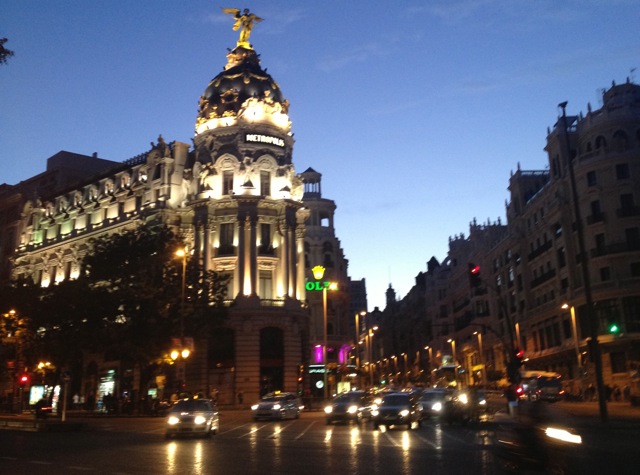
Historical sights seemingly peak around every corner in Spain’s capital city. The city’s main transportation hub is Puerta del Sol. The area buzzes at all hours of day and night and you can catch a metro or bus to anywhere you need to get to from here.
Madrid is renowned for it’s art scene, which is dominated by three large museums: Museo del Prado (classical art), Museo Nacional Centro de Arte Reina Sofia (modern art) and Museo Thyssen-Bornemisza (both classical and modern art).
El Parque del Buen Retiro is one of the largest, and certainly the most famous, public parks in Madrid. The Spanish capital’s equivalent of New York’s Central Park, provides city dwellers a chance to connect with nature on a smaller scale.
Formerly a park for the Spanish monarchy, the park still contains much regal charm. Walking through the glass Crystal Palace and boating in el Estanque are definitely musts here.
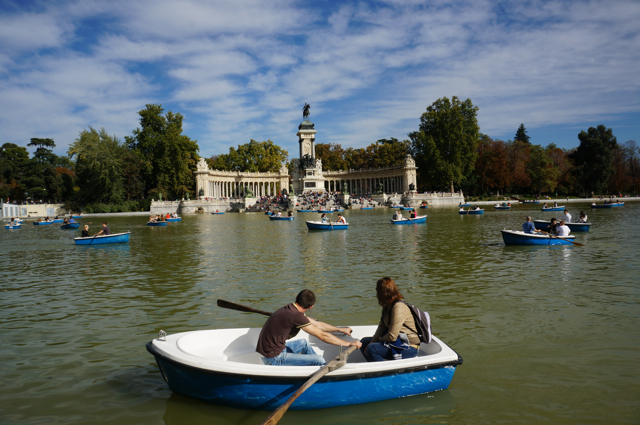
Madrid may not have the most famous royal family, but it does still have a monarchy. You can visit the Royal Palace of Madrid, or Palacio Real de Madrid to walk through regal history. The site of the Palace was used as a fortress and to house royals since the 1400’s. When a fire destroyed the buildings in 1794, a new palace was built, influenced heavily by French style and buildings such as the Louvre.

One of the most unexpected sights in Madrid is Templo de Debod, a 4th century B.C. Ptolemaic temple reconstructed atop a hill. This remarkable temple is located in the Parque Oeste. In 1960, several Egyptian temples, monuments and historic sites were facing flooding as the Great Dam of Aswan changed the water levels of the Nile. UNESCO made a plea to the world to help save these historical wonders. Spain, among others, answered the call. In 1968, as a gift for its support, Egypt donated the Temple of Debod to Spain.
Charming Plazas
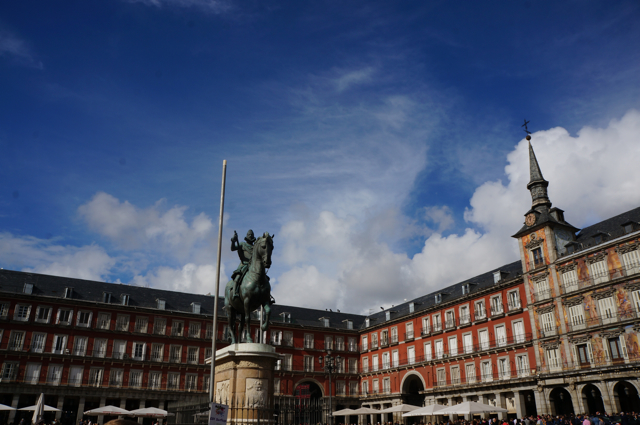
Much of Madrid’s charm lies in its many plazas, or large squares that offer monuments, cafes and respite from the hustle and bustle of the city, each with its hidden treasures of its owns. With plazas in most of Madrid’s neighborhoods, it can be difficult to chose which of the dozens to visit.
The Plaza de España marks the entrance to Madrid, as most traffic passes it to enter the city. Located next to many tourist sites, the plaza is a short walk from the Parque Oeste, Royal Palace and Gran Vía, a major shopping street. The dominating figure of the plaza is a monument to Miguel de Cervantes Saavedra, playwright and author of Don Quixote, a work that still summons much national pride for Spaniards.
Situated in the center of Madrid, Plaza de Santa Ana is a short walk from Puerta del Sol. Located in the Barrio de las Letras, a neighborhood that was once home to many famous writers, the plaza’s monuments pay homage to Spanish authors, including Pedro Calderón de la Barca. Though the monuments are nice to look at, what makes this plaza special is the many great cafes to grab some tapas or a drink.
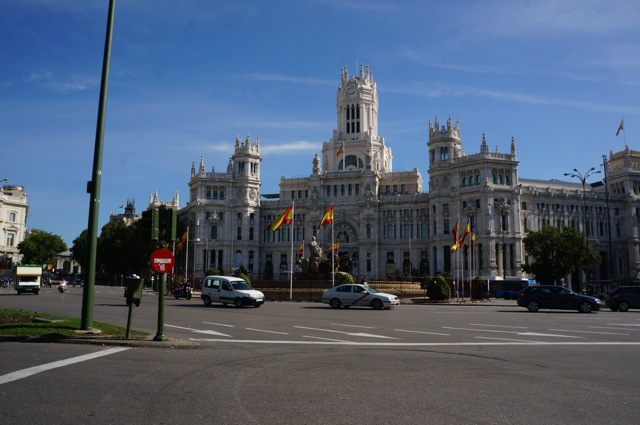
Surrounded by stunning neo-classical marble architecture, the Plaza de Cibeles has become a symbol of Madrid and is often used by the tourism board and can be found on many a postcard.
Unlike the majority of Madrid’s plazas, this one is not a pedestrian zone and is in fact a major traffic thoroughfare.
Of course, no trip to Madrid is complete without a visit to Plaza Mayor, the city’s most popular and historic plaza. This once ancient marketplace was converted into a stage for royal ceremonies, bullfights and hangings by the Habsburg kings. Today more than 230 lucky balcony owners look down at the square from the three residential buildings that surround, with an uninhibited view of the myriad of tourists, street performers, cafes and shops.
In the center is a bronze statue of King Philip III, triumphantly riding atop a horse and proudly featured in thousands of photos.
Flamenco in Madrid
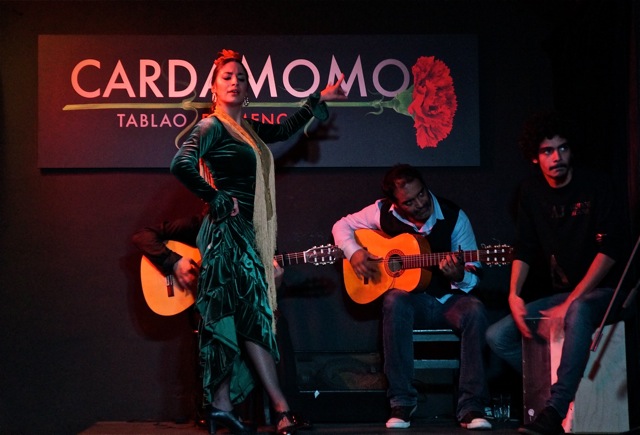
While Flamenco may seem like a Spanish tourist cliché, Cardamomo Tablao Flamenco offers the most authentic Flamenco in Madrid, offering tourists not their invented image, but a statement on what this gypsy dance means and is today.
So much more than dancing, this Spanish folk art is an intricate mixture of guitar playing, singing, and of course, heart-pounding dance moves. While the Andalucia region is more known for Flamenco than Madrid, many of the art’s greatest perform here to make a raw statement about the future of their gypsy craft.
Show admission includes a drink and a dinner add-on is also available. For budget travelers, entry to the bar with limited views of the stage is free.
Madrid’s Best Sangria
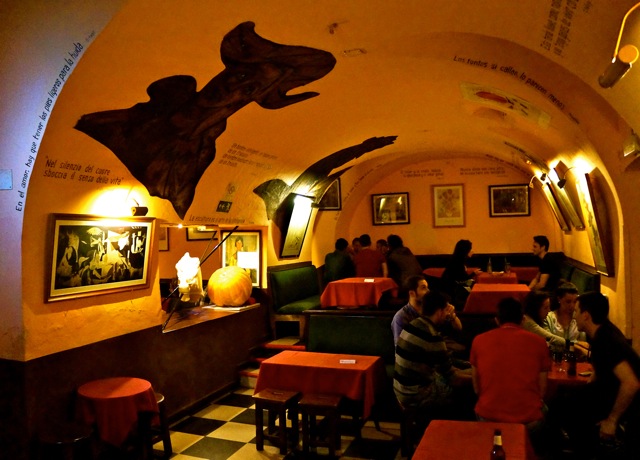
Typical food in Madrid is tapas, small appetizers, and it seems as if every other building is a café or bar offering vino tinto (red wine), cocktails or Mahou, the local beer. But perhaps no drink is more synonymous with Spain than sangria.
Sangria is a wine based drink infused with fruit and brandy. Its name is a derivation of the Spanish word for blood, “sangre,” due to its dark red color. While it is a famous icon of Spain, visitors may be surprised to learn that it is not so popular in Madrid. Sangria is traditionally a drink from Southern Spain.
However, locals will tell you the sangria at Las Cuevas del Sésamo is up there with the country’s best. There’s no flash at Las Cuevas del Sésamo, just authentic, delicious sangria served in pitchers. Give the waiter the word and he’ll bring enough sangria for the whole table.
Visiting Spain: Costs

When visiting Spain it is important to keep in mind costs. Madrid tends to be on the more expensive side as it is a capital city. Coastal destinations in the south such as Costa Brava tend to have lower prices (and more budget-friendly activities such as relaxing on the beach).
And there you have it – my recommendations for the best of Madrid. What did I miss? Let me know in the comments below!



